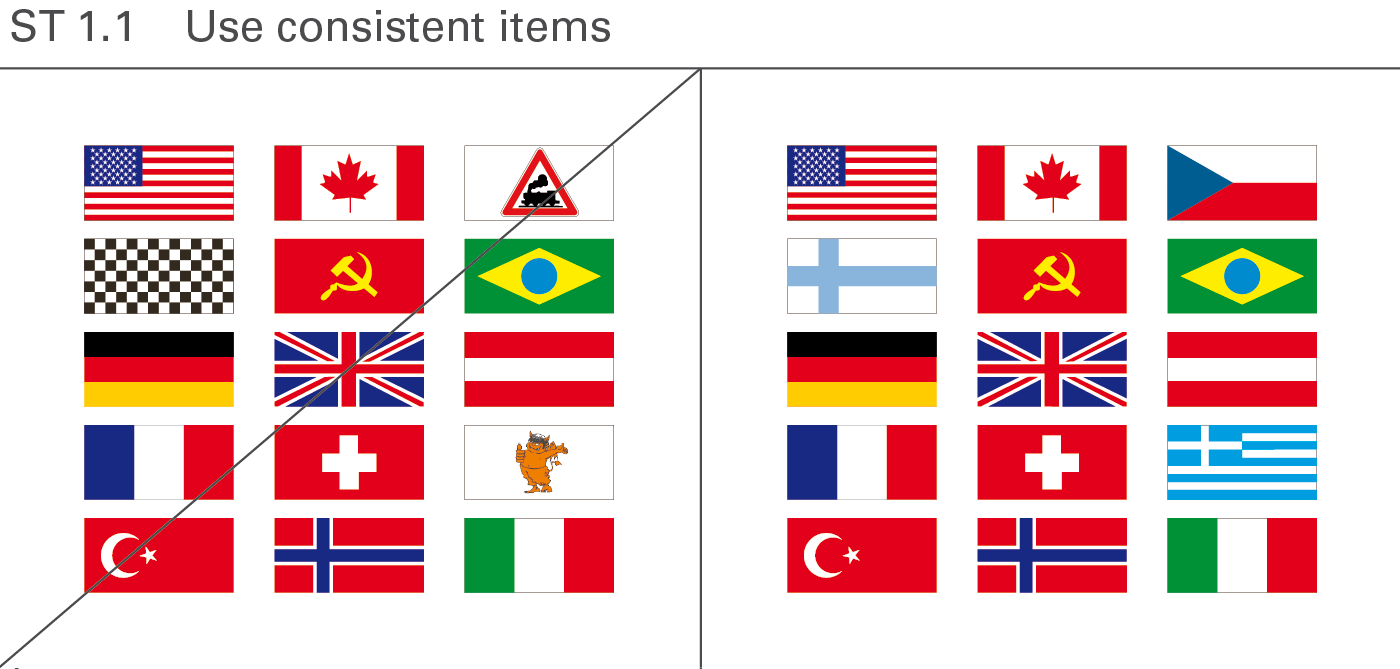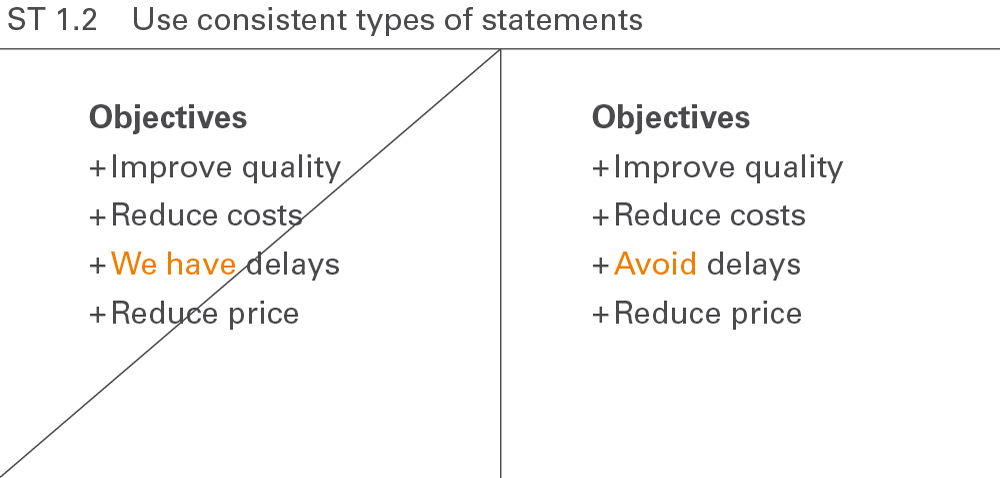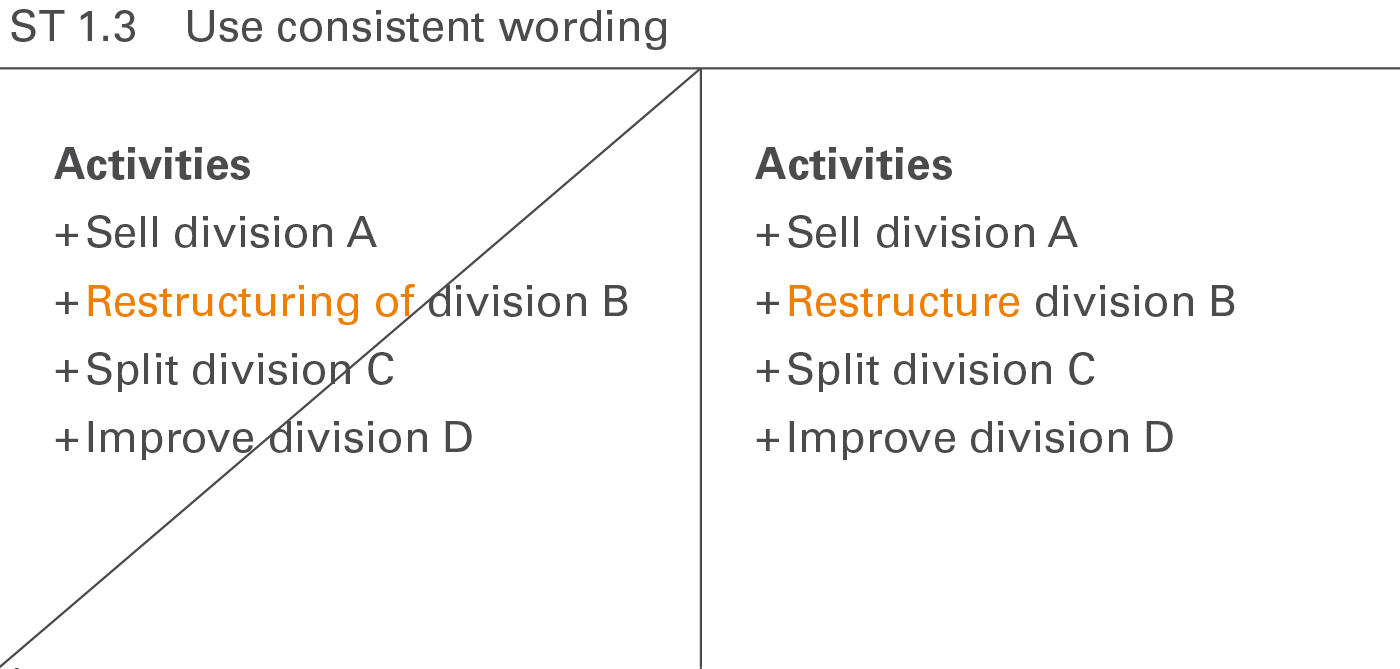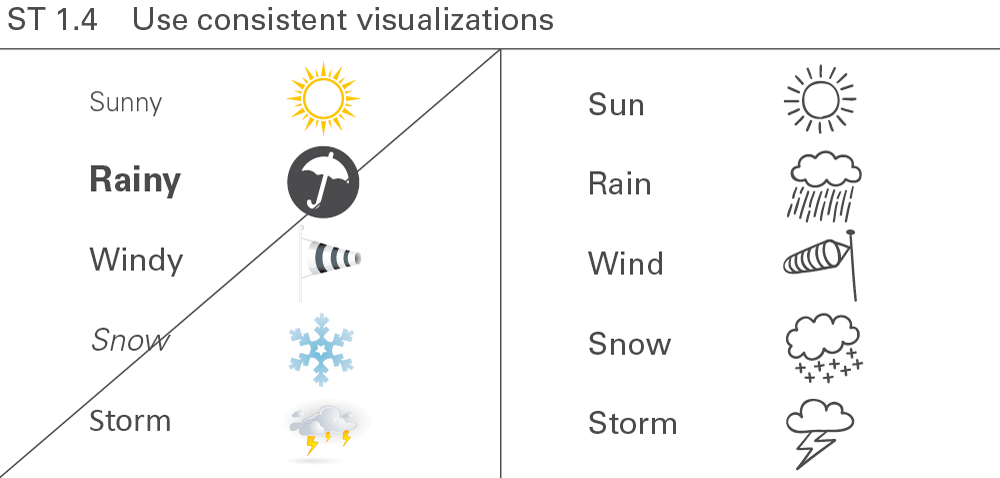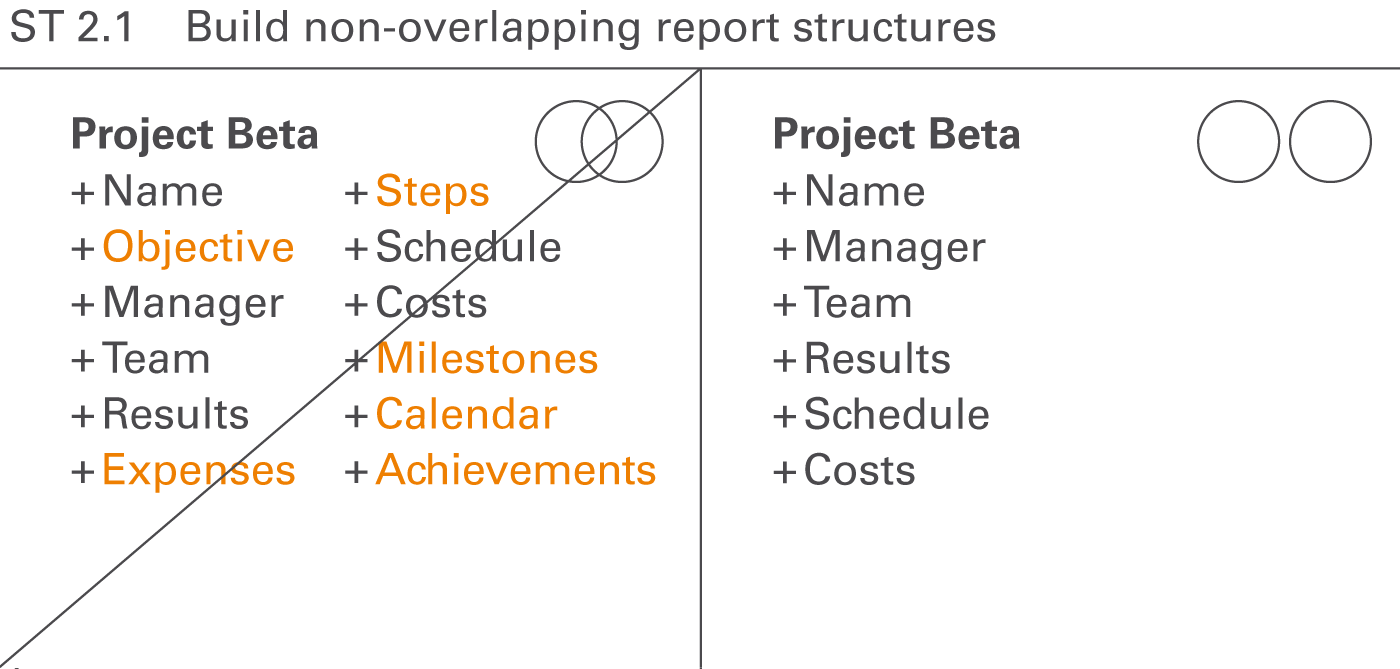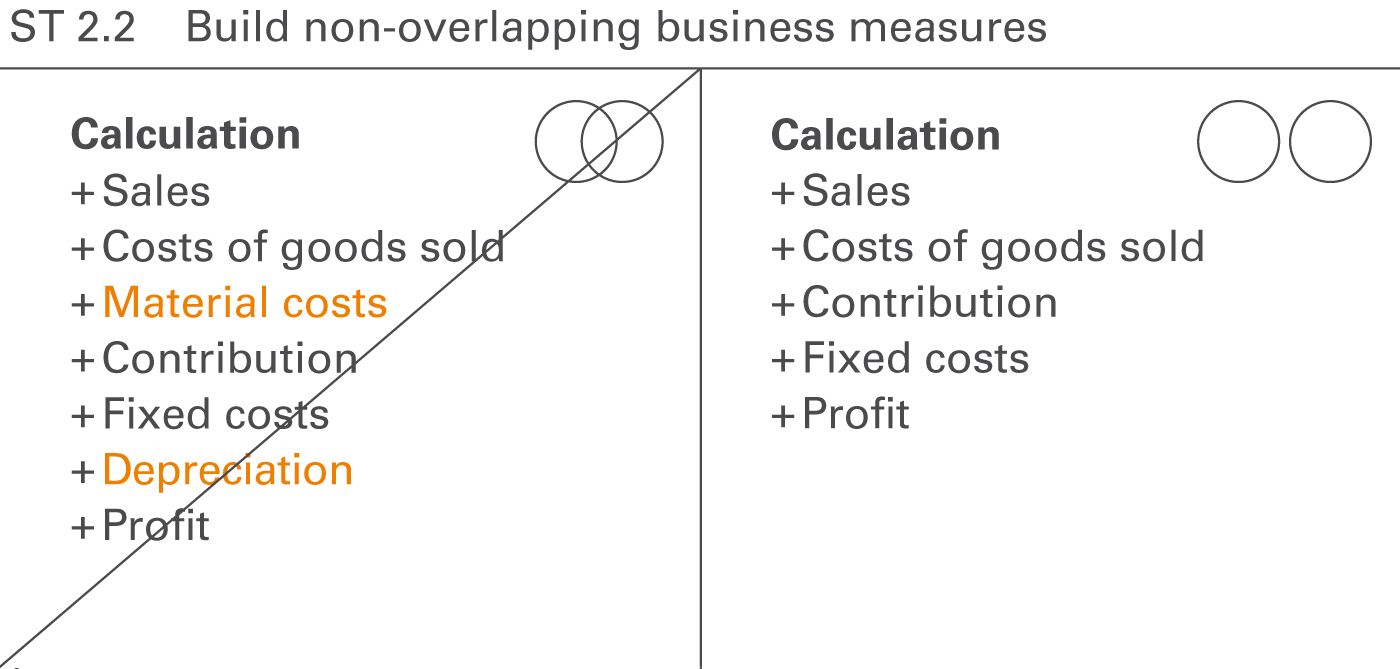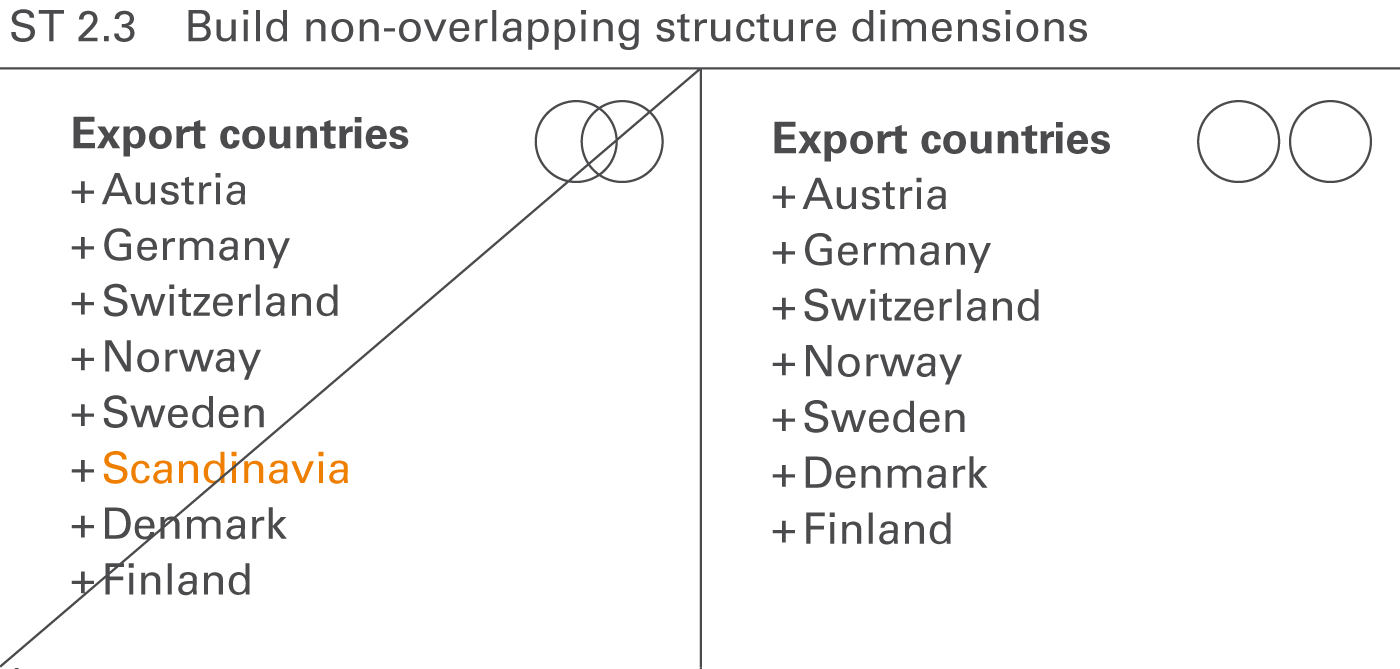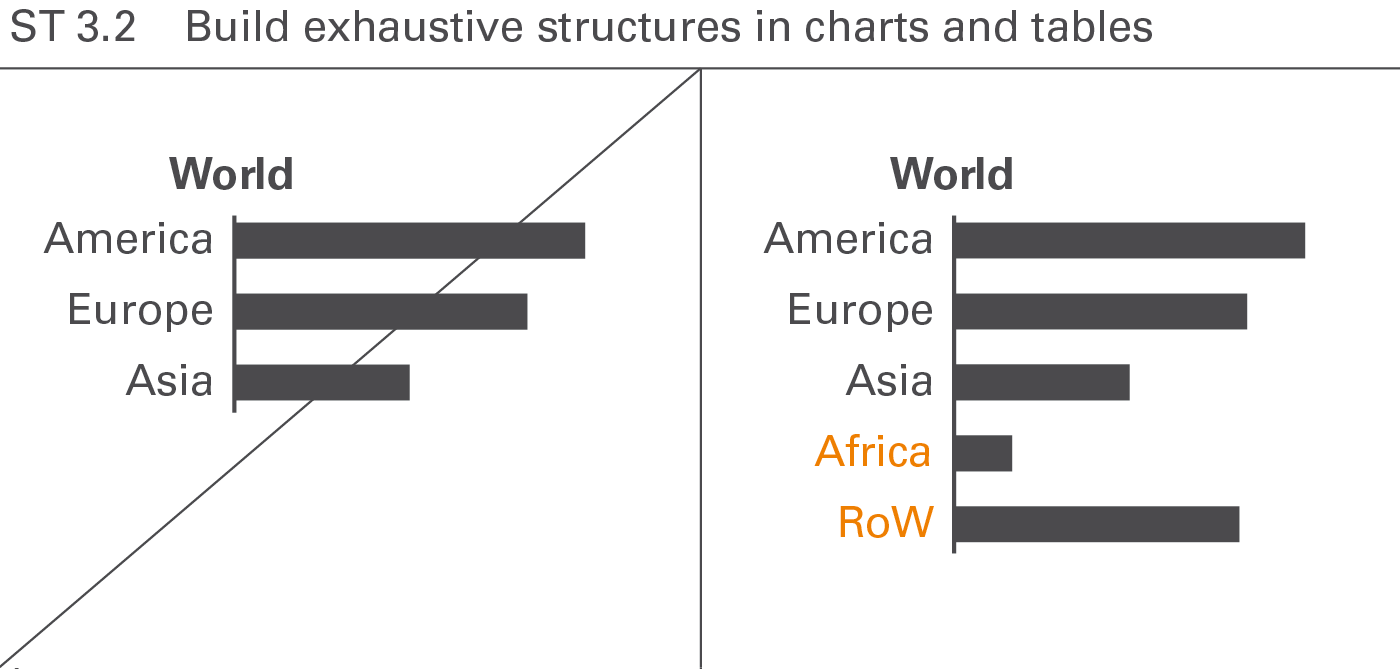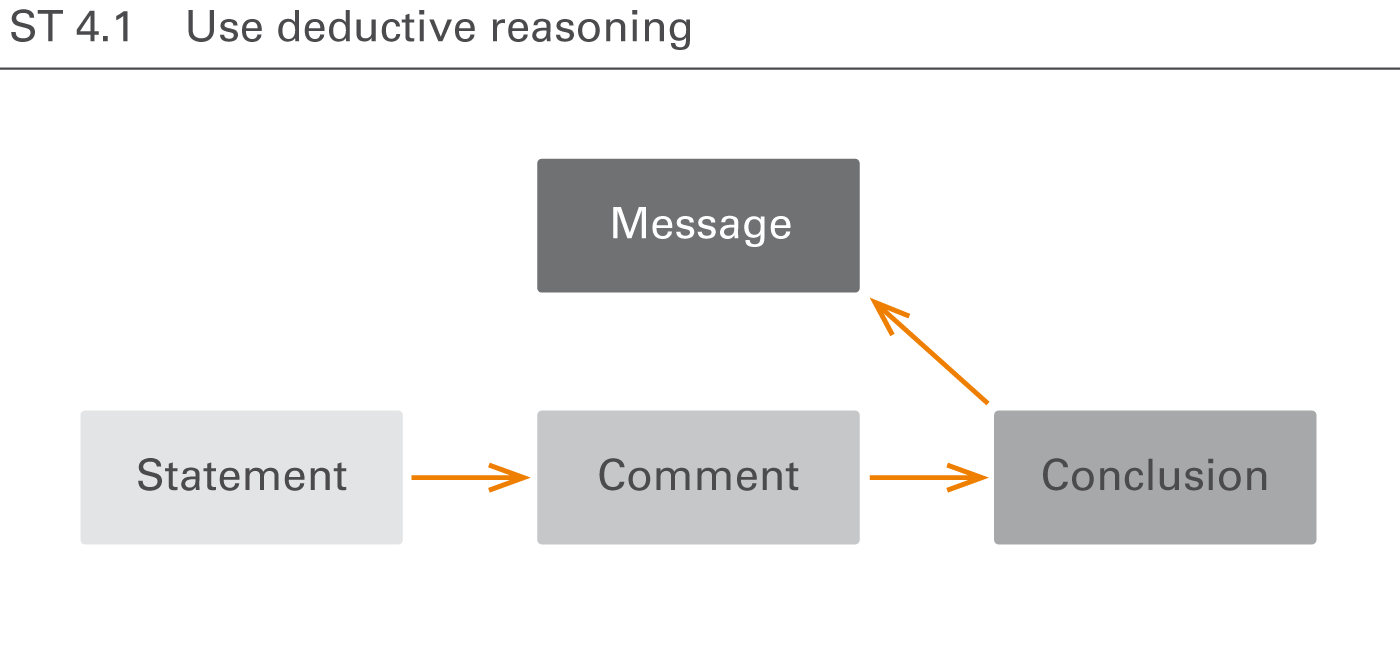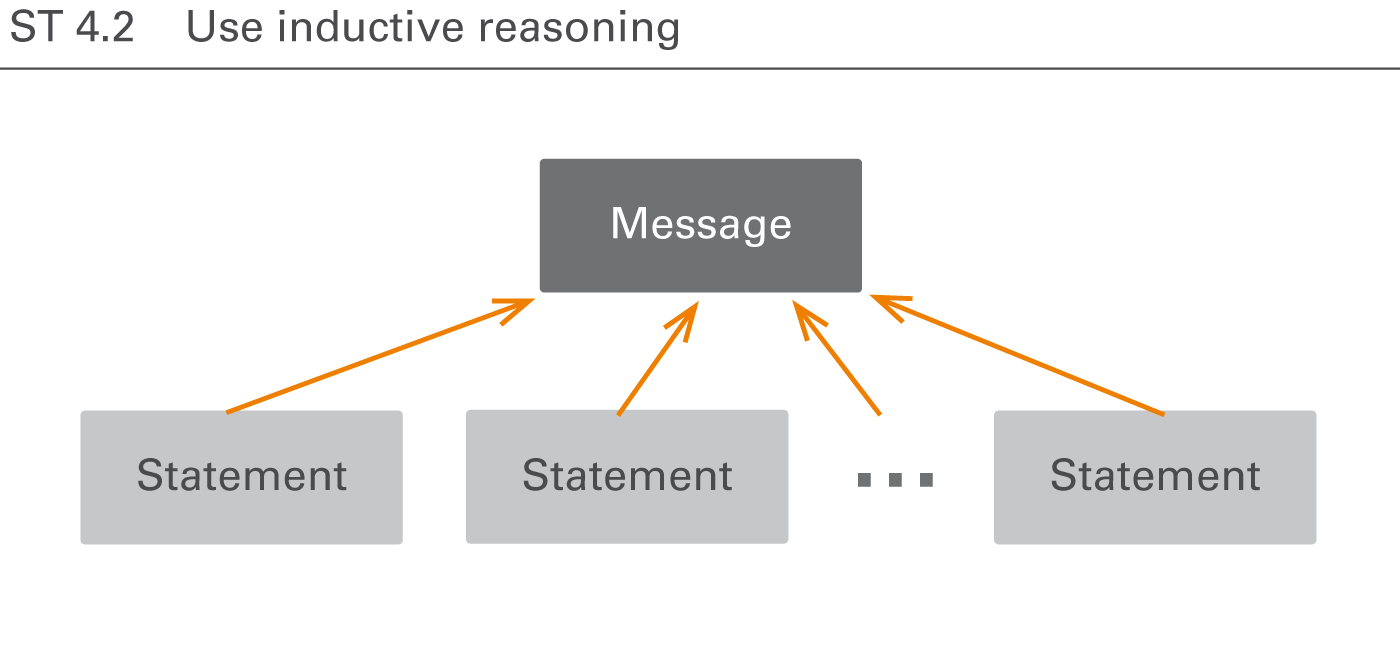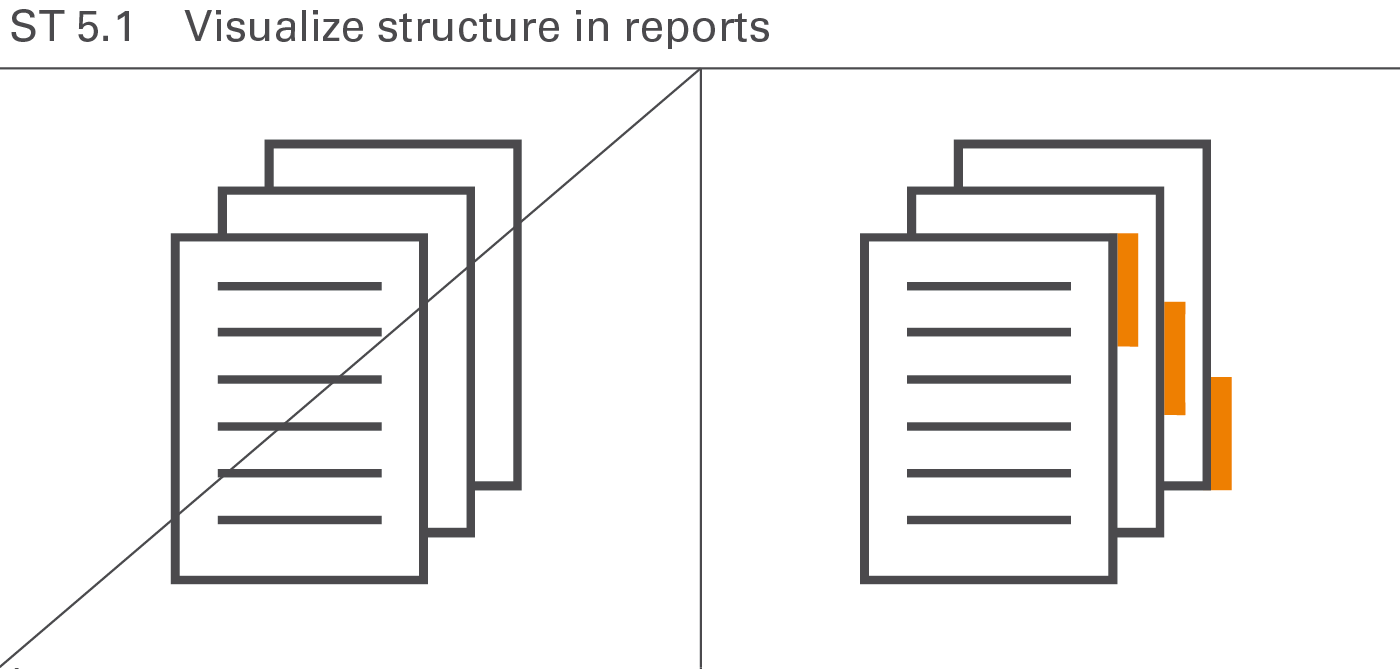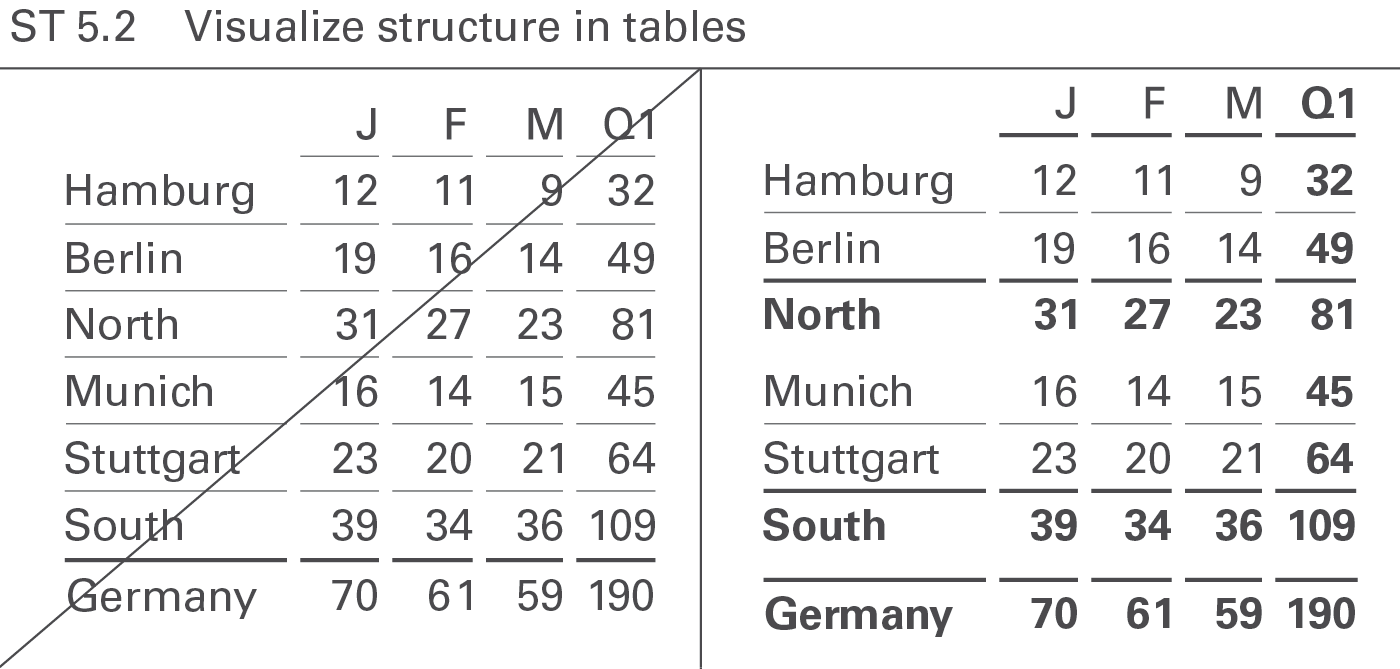STRUCTURE covers all aspects of organizing the content of reports and presentations.
Organizing the content means that reports and presentations follow a logical structure forming a convincing storyline.
This chapter covers using consistent elements, building non-overlapping elements, building collectively exhaustive elements, building hierarchical structures, and visualizing their structure properly.
- Use consistent elements
- Build non-overlapping elements
- Build collectively exhaustive elements
- Build hierarchical structures
- Visualize structure
Listings and groupings of any kind of elements (items, terms, pictures, symbols, etc.) used to organize content in charts, tables, and texts should contain consistent elements only. This pertains for example to items, statements, wordings, and the appearance of symbols and pictures.
Items in a group should be of the same type, i.e. consistent. Consistent items can be different types of cars, houses, traffic signs, or – as shown in Figure ST 1.1, on the right hand side – different national flags representing the corresponding nations. The left hand side of this figure includes other types of items besides national flags, destroying the consistency.
A list of statements will be easier to understand if all statements are of the same type. The right hand side of Figure ST 1.2 shows four suggestions. By contrast, on the left-hand side of this figure the third statement is a detection, not a suggestion.
Structure all phrases – especially in listed arrangements – in a grammatically consistent manner to facilitate quicker understanding. The right hand side of Figure ST 1.3 shows a group of four consistent suggestions, an imperative verb paired with a noun. By contrast, on the left hand side of this figure the second suggestion uses verbal substantive instead of an imperative.
Visualizations such as symbols and pictures that are uniform in respect to their layouts, colors, forms, fonts, etc. – especially in listed arrangements – facilitate faster and easier comprehension.
Elements belonging to a group should not overlap, i.e. they should be disjoint or mutually exclusive. This concerns practical applications such as report structures, business measures, or structure dimensions.
Structure reports and presentations in such a way that the parts, chapters, sections, and paragraphs do not overlap. They should not cover the same aspects.
In Figure ST 2.1, on the left hand side, the following chapters of a project description overlap:
- expenses and costs
- schedule, steps, milestones, and calendar
- objective, results, and achievements
At first glance, the six terms on the right hand side of this figure have no overlap in their logical structure. Of course, a relationship exists between the cost, the results, and the schedule of a project, but in regards to the content of the chapters this is not an overlap.
Structure a group of business measures in lists or calculations in a way they do not overlap, i.e. business measures on one hierarchical level should be disjoint or mutually exclusive.
Looking at Figure ST 2.2, on the left hand side, the following business measures overlap
- material costs and costs of goods sold
- depreciation and fixed costs
The calculation scheme on the right hand side has been cleaned up.
The elements of the structure dimensions used in reports and presentations should not overlap, i.e. the elements of a structure dimension should be disjoint or mutually exclusive.
Looking at Figure ST 2.3 on the left hand side, the regions Norway, Sweden, Denmark, and Finland overlap with Scandinavia.
A list of elements is considered to be exhaustive when they cover all aspects of a superordinate topic. For example, dividing Europe into Germany, Austria, Switzerland, and Belgium is not exhaustive because other countries also belong to Europe.
Structures with mutually exclusive (ME) and collectively exhaustive (CE) elements are known as MECE structures.
If some important arguments relating to a specific question are left out, the given answer will not be convincing.
Looking at Figure ST 3.1 on the left hand side the option “old products, new location” is missing.
The elements of structures presented in charts and tables should also be exhaustive, in other words, adding up to one hundred percent.
In many practical applications of this kind, adding a remainder element (“rest of...”) helps to conform to this rule.
Give reports and presentations a hierarchical structure whenever possible, resulting in faster comprehension and simplified searching. These rules help to write and present a good storyline.
Exhibiting deductive reasoning (logical flow) for a given message aids in building hierarchical structures. Logical flows always answer the question “why” following the key message. They begin with a statement (all men are mortal), continue with a comment (Socrates is a man), and resolve with a conclusion (Socrates is mortal) culminating in the message (Socrates will die).
Deductive reasoning can be best applied in controversial discussions for arguing and demonstrating need for action. However, it forces the readers or the audience to reproduce the deduction and the whole argumentation can collapse if any statements are questionable.
Exhibiting inductive reasoning (logical group) for a given message aids in understanding hierarchical structures. Logical groups are homogenous, non-overlapping, and collectively exhaustive arguments culminating in a message. This results in a powerful argumentation that satisfies the addressees need for an easily comprehensible logical structure.
Having organized the arguments hierarchically, visualize this structure in order to make the storyline transparent.
For easier understanding, underscore the logical structure of reports and presentations with visual aids (e.g. outlines, dashboards, summaries). Figure ST 5.1 illustrates this rule showing binder tabs on the right hand side.
Design tables in such a manner that their hierarchical structure can be recognized in both the columns as well as the rows.
The right hand side of Figure ST 5.2 shows three hierarchical levels of rows in a table. The base level shows cities, the first summary shows regions, and the second summary shows the country.
Notes are also easier to understand when their structure is shown clearly (see Figure ST 5.3).
